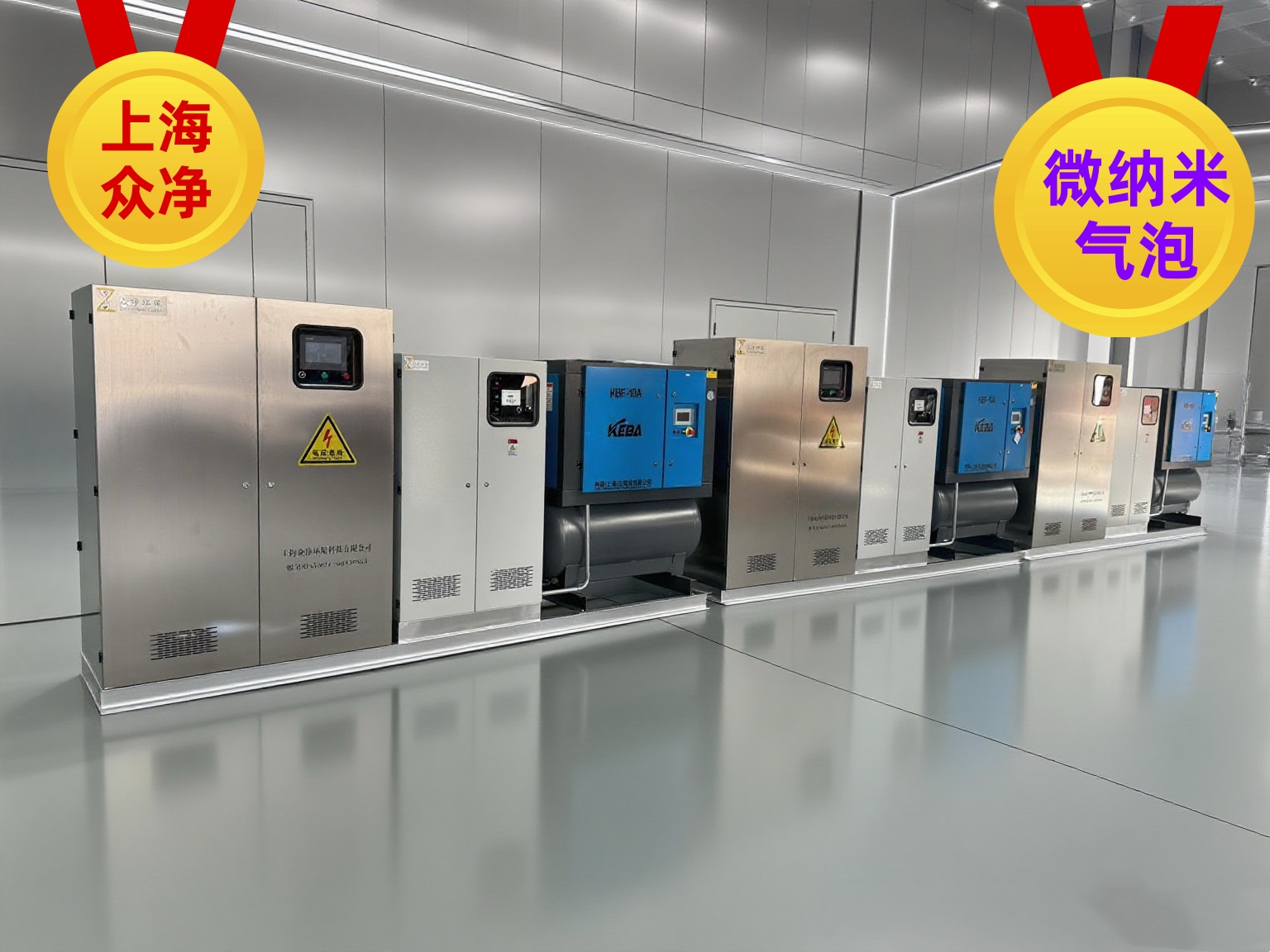Principle analysis of micro nano bubble exhaust gas treatment technology
Click:1135Date:2025-07-31 01:44:59
Micro nano bubble exhaust gas treatment technology is a technology that utilizes the special physical and chemical properties of micro nano bubbles (bubbles with diameters ranging from micrometer to nanometer) to purify industrial exhaust gas, odorous gases, etc. The principle can be developed from two aspects: the characteristics of micro nano bubbles and the core process of exhaust gas treatment:
1、 Core characteristics of micro nano bubbles
Micro nano bubbles (usually referring to bubbles with a diameter of 100 nanometers to 10 micrometers) have the following unique properties compared to ordinary bubbles (millimeter level), which are the basis for their efficient treatment of exhaust gas:
Huge specific surface area
The smaller the volume of the bubble, the larger the surface area per unit volume. For example, when the bubbles generated by 1 liter of water change from millimeter level to micrometer level, the total surface area can increase by thousands of times. This means that the contact area between bubbles and exhaust gases and liquids is significantly increased, providing more "interfaces" for mass transfer (material exchange) and reactions.
Long term stay and slow rise
Micro nano bubbles are less affected by the surface tension and buoyancy of water, and their ascent speed in liquid is extremely slow (usually less than 0.1 cm/s), and they can even stay in water for several minutes to hours, far exceeding ordinary bubbles (rising and bursting within seconds). This prolongs the contact time between bubbles, exhaust gas, and treatment liquid, improving reaction efficiency.
Strong oxidation and release of hydroxyl radicals (· OH)
Micro nano bubbles will gradually contract and eventually rupture during their ascent due to the pressure difference between the inside and outside. At the moment of rupture, the inside of the bubble generates high temperature (up to thousands of degrees Celsius) due to adiabatic compression, which promotes the decomposition of water molecules into hydroxyl radicals (· OH) with strong oxidizing properties. Hydroxyl radicals are highly efficient oxidants that can rapidly oxidize and decompose organic pollutants (such as VOCs, odorous substances, etc.) in exhaust gases.
Charged and Adhesive
The surface of micro nano bubbles usually carries negative charges and can adsorb charged particles (such as dust, aerosols) and polar pollutant molecules in the air, enhancing the ability to capture particles and soluble substances in exhaust gas.
High gas-liquid mass transfer efficiency
When ordinary bubbles transfer mass in liquid, the gas needs to pass through the "liquid film" on the surface of the bubble to enter the liquid, resulting in lower efficiency; Due to their small volume and high surface tension, micro nano bubbles significantly reduce the mass transfer resistance at the gas-liquid interface, making it easier for gases (such as pollutants in exhaust gas) to dissolve or diffuse into liquids, thereby improving absorption efficiency.
2、 The core process of exhaust gas treatment
The micro nano bubble exhaust gas treatment technology achieves purification through "gas-liquid contact", and the specific process is as follows:
Introduction of exhaust gas and mixing with bubbles
The waste gas to be treated (such as VOCs, hydrogen sulfide, ammonia, dust, etc.) is introduced into the reaction device (such as spray tower, gas-liquid mixing tank), and at the same time, water or treatment liquid is converted into a large number of micro nano bubbles through a micro nano bubble generator, forming a "gas-liquid mixing system".
Capture and dissolution of pollutants
The particulate matter (such as dust) in the exhaust gas is adsorbed by the negative charge on the surface of micro nano bubbles, and sinks into the liquid with the bubbles to achieve dust removal;
Soluble pollutants (such as ammonia and hydrogen sulfide) dissolve into the liquid surrounding micro nano bubbles through gas-liquid mass transfer and are absorbed by the liquid (similar to the "water washing" process).
Oxidative decomposition and purification
For insoluble organic pollutants such as VOCs and benzene derivatives, the hydroxyl radicals (· OH) generated when micro nano bubbles burst directly oxidize them into harmless substances (such as CO ₂, H ₂ O);
If combined with the addition of an oxidizing medium, micro nano bubbles can enhance the dispersibility and activity of the oxidant, further improving the oxidation efficiency;
For acidic/alkaline pollutants, they can be removed by adjusting the pH value of the liquid (such as ammonia absorption by acidic solution and hydrogen sulfide absorption by alkaline solution) to undergo neutralization reaction in the liquid.
Purified gas emissions
Through the above process, pollutants in the exhaust gas are absorbed, oxidized, or neutralized. The purified gas (after meeting the standard) is discharged from the top of the device, while pollutants in the liquid are removed through subsequent treatments such as precipitation and biochemical treatment.
3、 Technical advantages and application scenarios
Advantages: Efficient purification (especially for low concentration and difficult to degrade pollutants), small footprint, no secondary pollution (hydroxyl radical oxidation products are mostly harmless substances), and the ability to simultaneously treat particulate matter and gas pollutants.
Application scenarios: VOCs control in industries such as chemical, printing, and painting; Treatment of odorous gases in sewage treatment plants and garbage stations; Industrial dust purification; Laboratory waste gas treatment, etc.




 Home
Home

